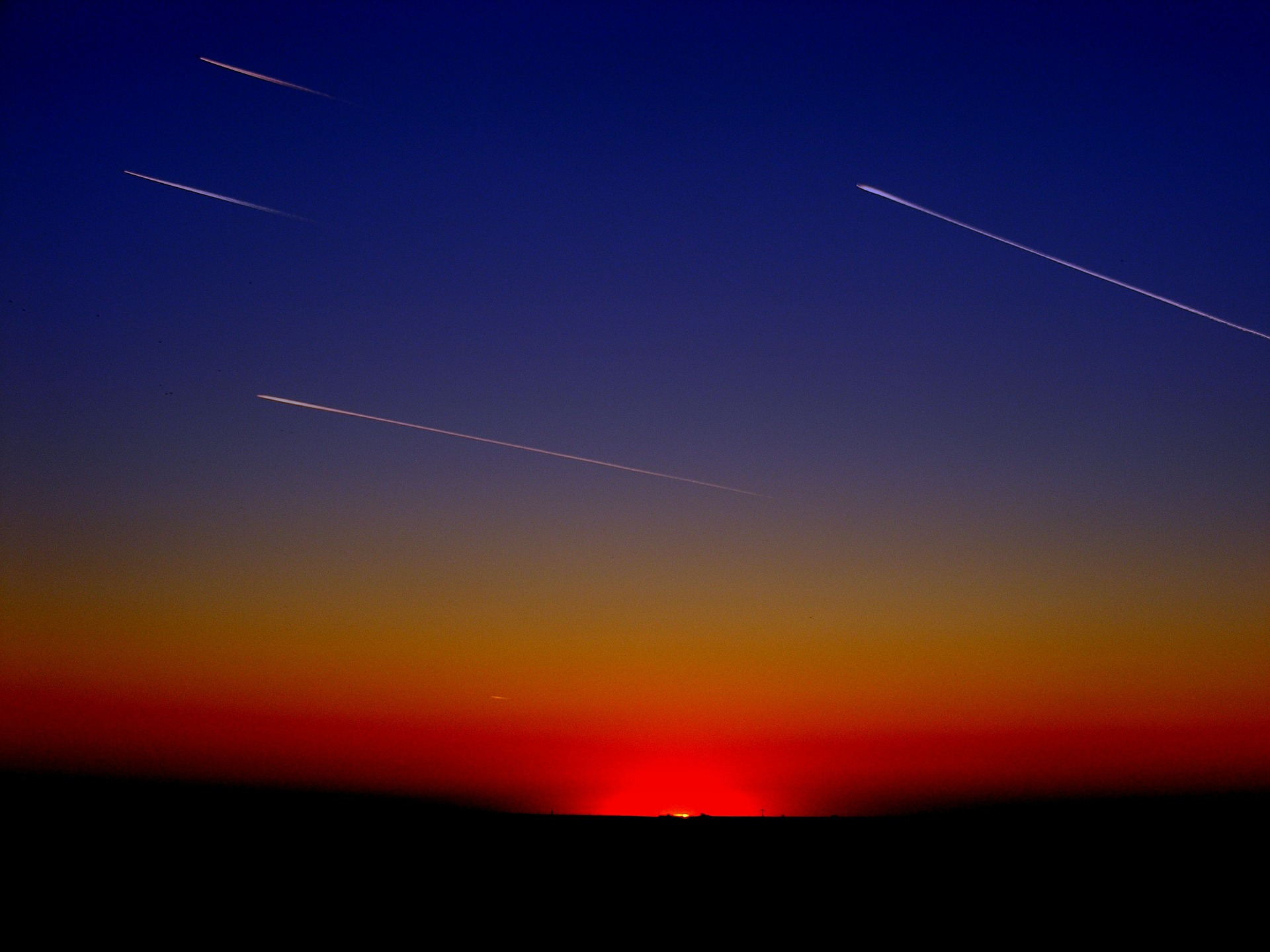 Earth & Space
Earth & Space
What space dust could tell us about Earth’s past
Earth’s atmosphere has changed throughout our planet’s history, helping to regulate climate—but finding evidence for changes from billions of years ago remains a challenge. We may be able to learn about the composition of the atmosphere billions of years ago using tiny iron micrometeorites.

Determining the composition of Earth's current atmosphere is relatively straightforward, using direct measurements, remote sensing via satellites, and sampling by aircraft. It is far more complicated to determine the composition of Earth's past atmosphere, going as far back as 4.6 billion years ago. Bubbles in ice cores can capture samples of the atmosphere's past, but the oldest ice on Earth, from Antarctic ice cores, is only a few million years old. For information dating back as far as 3.5 billon years ago, scientists can use fossilized soils, called paleosols, since the minerals in them reflect the atmosphere's composition at that time. Analysis of paleosols indicates that prior to 2.5 billion years ago, Earth's atmosphere was mostly composed of nitrogen (N2) and carbon dioxide (CO2), but the relative amount of each gas is tough to pinpoint. Paleosols can be considerably altered by time and environmental factors like rainfall, and some the data obtained from them can be variable and even contradicting. Therefore, questions persist about the early Earth's atmosphere.
Micrometeorites offer a new, novel means of studying the ancient atmosphere. Micrometeorites—as their name suggests—are very small meteorites, with sizes typically between a speck of dust and a grain of sand. Iron micrometeorites enter the atmosphere as iron metal and collide with air particles in their path. These collisions slow the tiny meteorites and cause them to briefly heat, melt, and crystallize while they are still tens of kilometers above the ground. While molten, the iron reacts with oxygen and carbon dioxide in the air, forming iron oxide minerals (namely wüstite and magnetite). The oxidized micrometeorites eventually reach the ground, where some may land in mud and become trapped, preserving them in rock.
A 2017 study collected a number of oxidized 2.7-billion-year-old iron micrometeorites, suggesting these might be a new means of “sampling” the composition of the early Earth's atmosphere. Because iron micrometeorites are oxidized to specific iron oxides while they travel through the atmosphere, their composition reflects the composition of the Earth's atmosphere at the time. Using this data, combined with the knowledge that the atmosphere 2.7 billion years ago was largely composed of N2 and CO2, we determined that at least 25% of the atmosphere (and up to about 50%) would need to have been CO2 for micrometeorites to have the detected oxide combination.
This amount of CO2 may seem high in comparison to today's atmospheric CO2 content of 0.04%. However, there is evidence of glaciers at the poles 2.7 billion years ago, which suggests that the global climate was about as warm then as it is today. We used a climate model to calculate the likely global climate based on the data from the micrometeorites, and found that a high amount of CO2 in the atmosphere would have been crucial for keeping the planet warm enough to support life at that time. The high CO2 was likely just enough to keep the early Earth warm considering that the Sun was about 15% dimmer 2.7 billion years ago (stars like our Sun tend to brighten over time, as they undergo more and more nuclear fusion). There is also evidence that the atmosphere contained less N2compared to today, meaning that atmospheric pressure may have been lower, which would also have resulted in cold global temperatures without abundant CO2.
Iron micrometeorites are a new representation of the ancient atmosphere, but our analysis indicates that they are worth exploring even further. The data we get from them can help us answer persisting questions, and the picture they paint of the Earth's atmosphere 2.7 billion years ago corresponds with, and expands upon, our current understanding about the world at that time. As we study micrometeorites further, these little specks of space dust may help us answer big questions about the evolution of our planet's atmosphere through deep time.
Original Article:
Payne, R. C., Brownlee, D. & Kasting, J. F. Oxidized micrometeorites suggest either high pCO2 or low pN2 during the Neoarchean. Proc. Natl. Acad. Sci. U. S. A. 117, 1360-1366 (2020).
Edited by:
Dr. Ayala Sela , Associate Editor
We thought you might like
A four-legged ancestor led the way for early whales dispersal
Sep 16, 2019 in Evolution & Behaviour | 4 min read by Olivier LambertA neighborhood in space: finding the Moon’s age to understand Earth’s evolution
Feb 1, 2021 in Earth & Space | 3.5 min read by Maxime MauriceHow the early Earth evolved from a hellish to a habitable world
May 19, 2023 in Earth & Space | 4 min read by Yoshinori Miyazaki , Jun KorenagaMore from Earth & Space
Discovery of the first radiation belt beyond the Solar System
Jan 27, 2025 in Earth & Space | 3.5 min read by Juan Bautista Climent OliverOne million (paper) satellites
Jan 24, 2025 in Earth & Space | 3 min read by Ewan Wright , Andrew FalleVolcanic Ash: A Nutrient Boost for Reef-Building Corals
Sep 18, 2024 in Earth & Space | 4 min read by Frank Förster , Tom SheldrakeAmmonia Energy: A Call for Environmental Awareness
Aug 29, 2024 in Earth & Space | 3.5 min read by Matteo Bertagni , Robert Socolow , Amilcare PorporatoLikely increase in coral thermal tolerance at a Pacific archipelago
Dec 29, 2023 in Earth & Space | 3 min read by Liam LachsEditor's picks
Trending now
Popular topics


